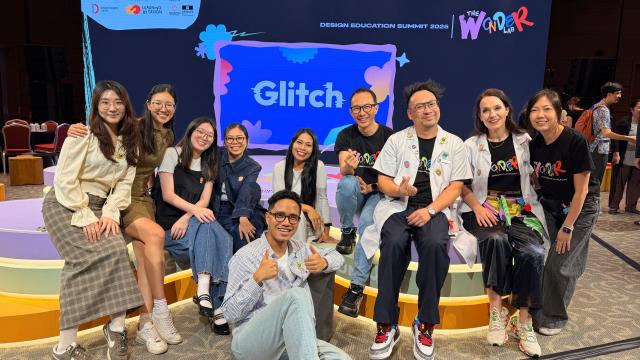Students from the School of Science and Technology enjoyed an immersive and unique out-of-classroom experience at SIT.
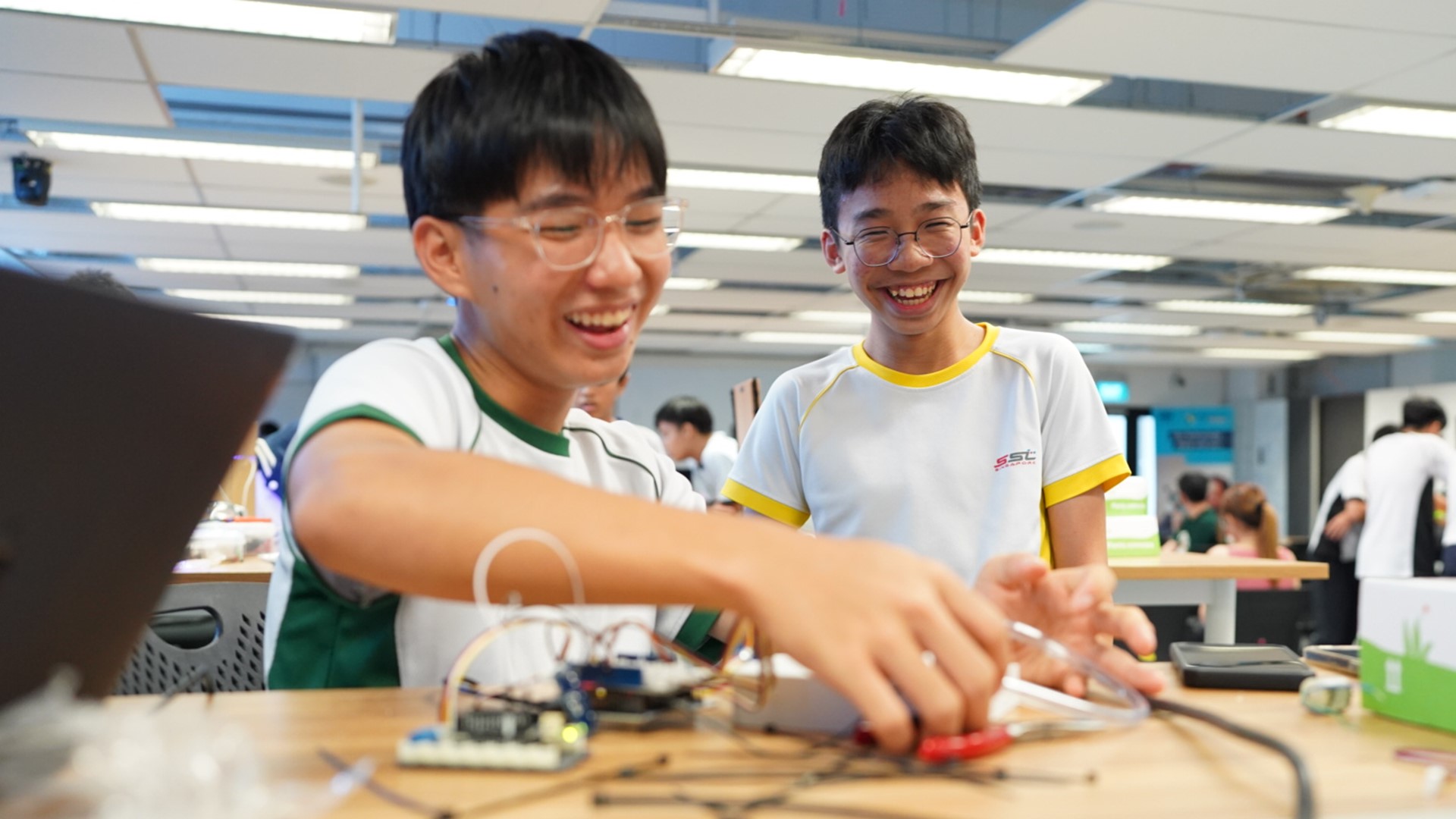
SST students get hands-on with the Vittascience Connected Plant Kits sponsored by STMicroelectronics. (SIT Photo)
Imagine growing your own vegetables at home in a compact, automated, self-watering grow box equipped with lights for optimal plant growth. You can track your greens easily through your phone, thanks to sensors installed in the grow box that send you updates and notifications through an app. You’ll not only be enjoying the satisfying taste of your own harvest, you would also be doing your bit to boost Singapore’s food security.
This was the winning prototype created and presented at the inaugural SITxSTxSST Discover Camp held at SIT@Dover from 9-11 January 2024. Perhaps the most impressive part of this proposed “Greenbox” is not the low-effort urban farming it enables, but the fact that its inventors are only 16 years old – Secondary 4 students from the School of Science and Technology (SST).
The camp was organised by SIT, in collaboration with STMicroelectronics (ST), with the goal of bringing learning and fun to 24 SST students who were eager for hands-on learning experiences on microprocessors, Internet of Things (IoT) and mobile app development. With the camp’s focus on sustainability and tackling climate change with technology, SIT also organised a tour of the solar-hydroponics setup and showcased innovation in food processing for the future. The SST students also got a slice of university campus life and the chance to ask burning questions about the equipment and technology that they were introduced to.
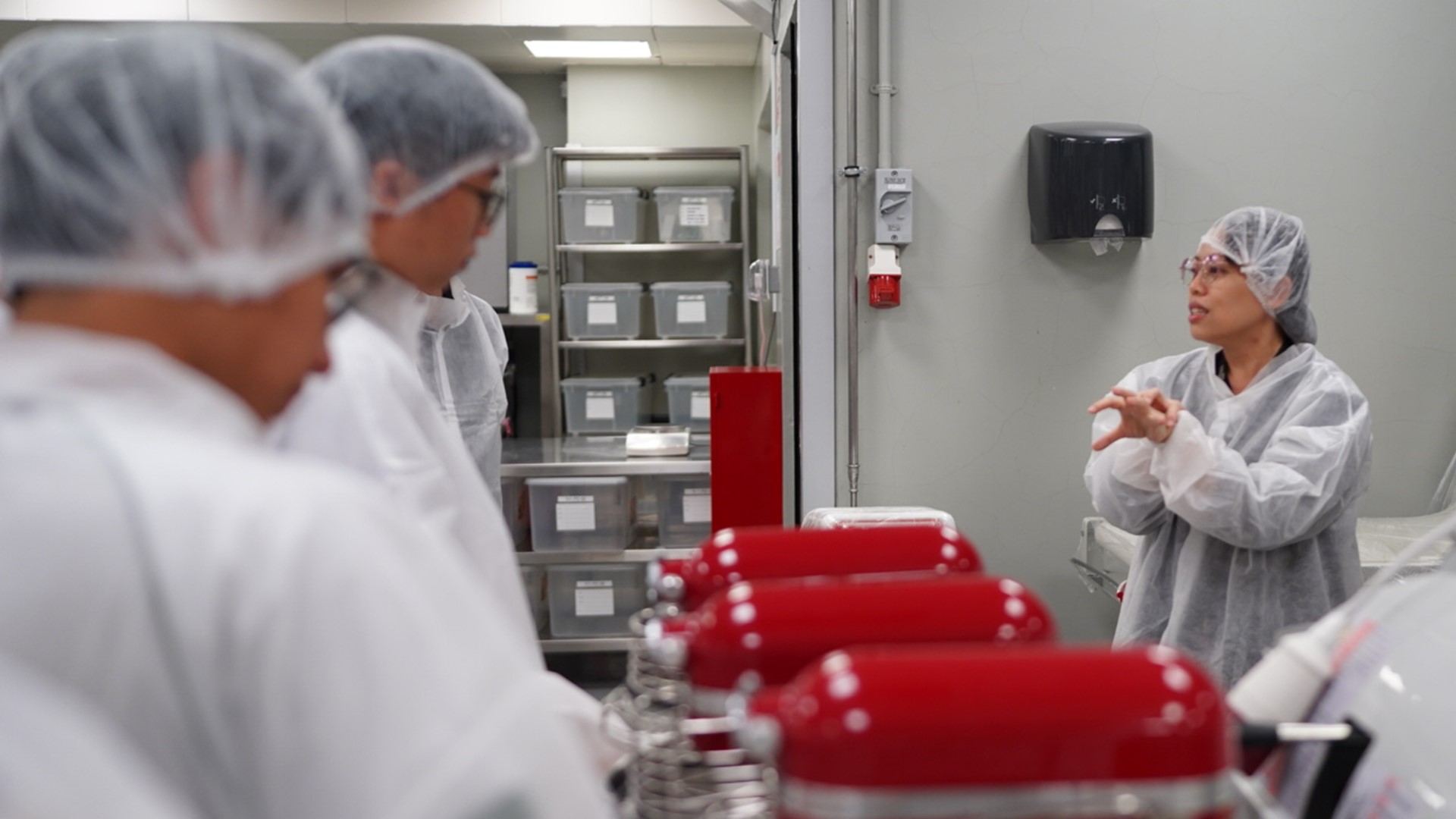
SST students exploring the Food Processing Lab at SIT@Dover. (SIT Photo)
Through ST’s sponsorship of the Vittascience Connected Plant Kits and electronics starter kits designed for prototyping, camp participants also enjoyed first-hand practical experience tinkering with hardware and linking them up to software. The students were taught how to operate the kits through demonstrations and step-by-step guidance, and then challenged to come up with their own prototypes to address real-world climate change-related issues.
“The camp is a great way to nurture young engineers and expose students to computational thinking, which is fundamental for programming. We taught them the basics of using embedded systems and IoT, which are important domains in today’s world of connectivity,” said Assistant Professor Kiew Choon Meng, who planned and coordinated the camp programme. The camp’s curation of activities also helped the students better understand data exchange between an entity and a cloud server – a key process in many tech applications today.
Invitation to Tinker with Sensor Kits and Equipment
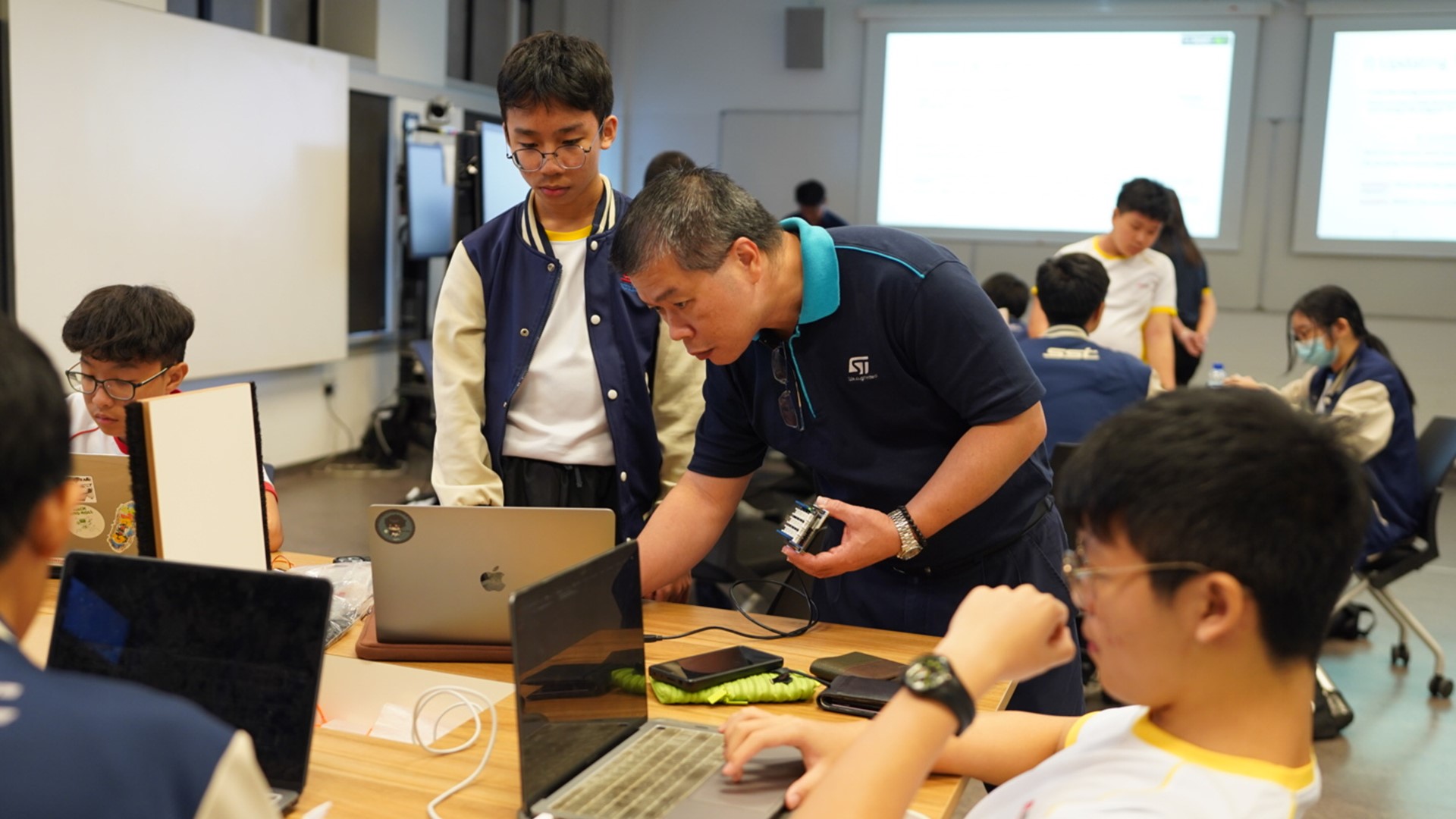
A STEM Ambassador from ST guiding the SST students on the starter kits. (SIT Photo)
During the project work segment, the students impressed Asst Prof Kiew with their ability to apply what they had just learned from the workshops. Each day, the participants rolled up their sleeves and began ideating, designing their prototype and coding. Whenever they were stuck, STEM Ambassadors from ST were there to serve as facilitators and guide them to find the right solutions.
"I am impressed by the level of technical competency and autonomy demonstrated by the SST students. Within a short span of 2.5 days, they successfully designed and pitched products to address sustainability issues such as smart farming and flooding. I’m looking forward to future engagements with the students, and I can’t wait to see the next innovative products they will develop using ST chips!" shared Hui Mian, Product Test Manager and STEM Ambassador from ST.
The six participating groups then took turns to present their innovations and prototypes to a panel of judges from SIT, ST and SST. While “Greenbox” clinched top spot, another proposal which caught the judges' attention was one that used IoT technology to activate floodgates and warn local authorities of flooding risks. Titled “Tidelite”, the team took inspiration from floodgates used in Venice, Italy and designed their own floodgate system comprising a buoy to detect rising water levels and a wall that can be erected to prevent water flow.
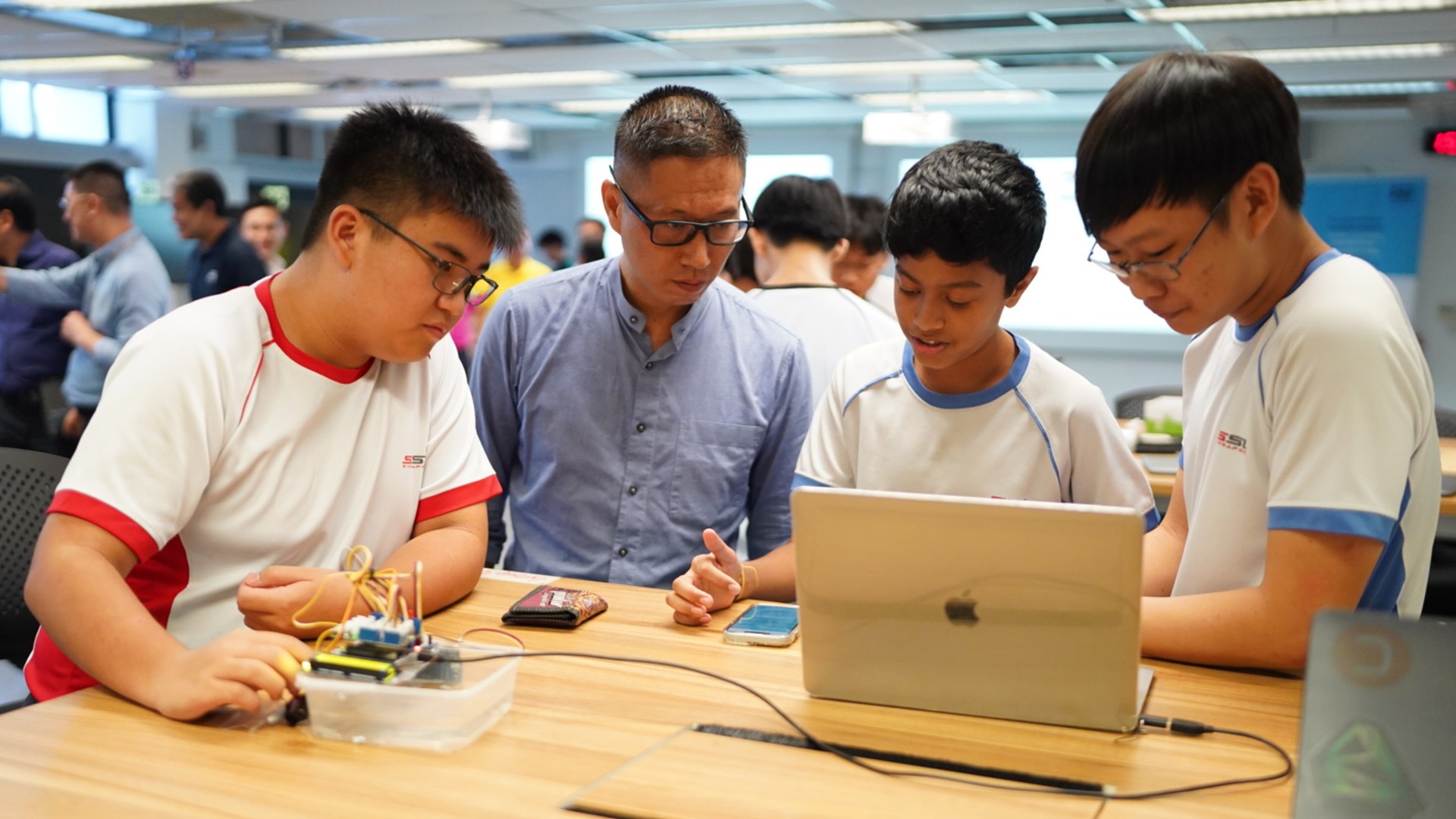
Camp participants explaining their prototype to the Principal of SST, Mr Nick Chan (second from left). (SIT Photo)
The third group to be awarded a prize had proposed a flash flood warning system to help notify people to evacuate when necessary. All three winning groups had done exceptionally well in assembling prototypes using the supplied kits and also supplementing with their own materials, such as cardboard and plastic food containers; coding a simple mobile application; and demonstrating to the audience how they could send data to the cloud and link it back to the microcontrollers in their systems.
Early Exposure to Possible Career Options
The skills and knowledge imparted during the camp can help students build a good foundation for further studies in engineering. Asst Prof Kiew hopes that the camp experience and interactions with professionals from ST gave the students a perspective on what a career as an engineer might be like, and how engineers contribute to the solving of real-world problems.
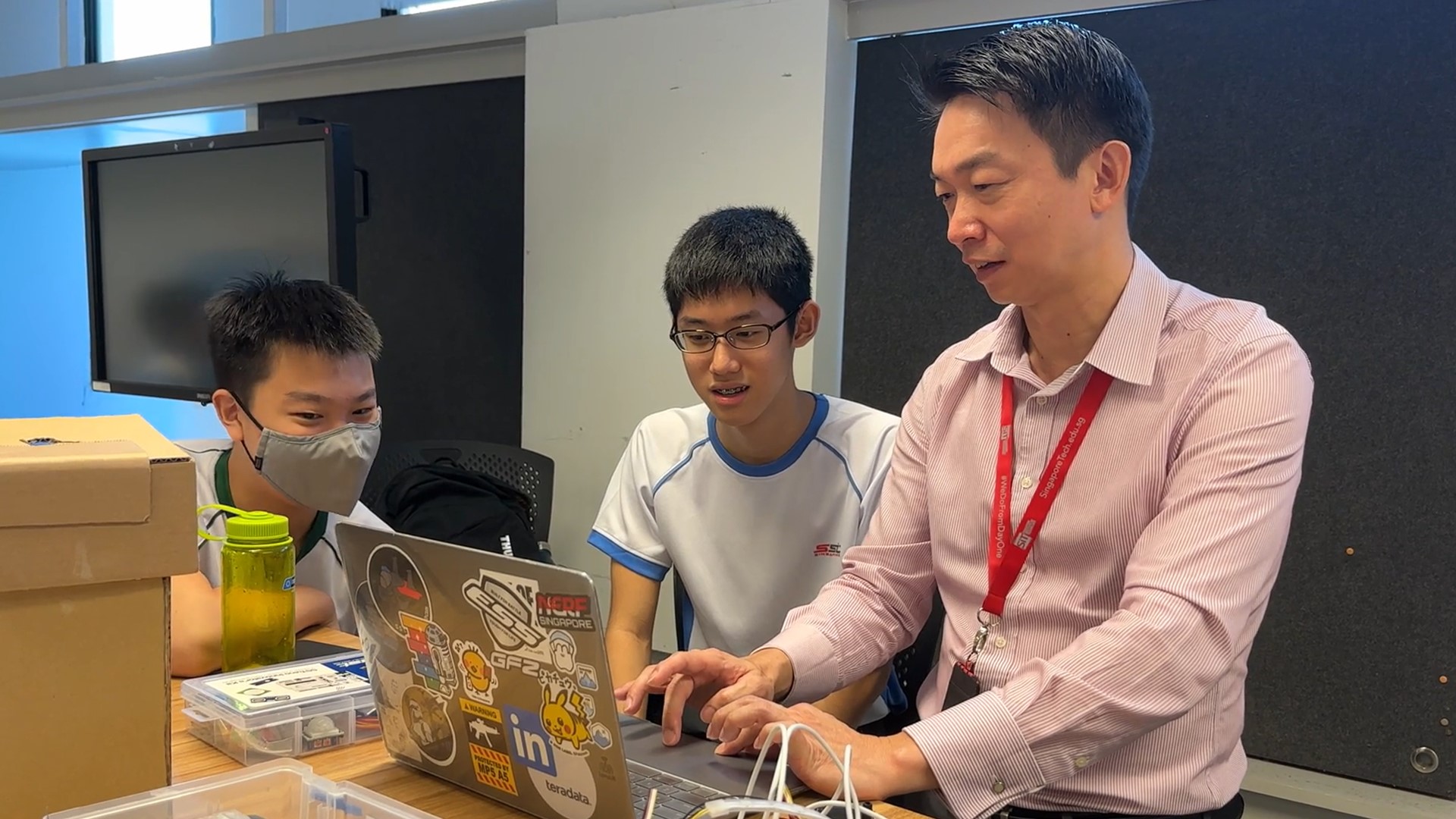
Assistant Professor Kiew Choon Meng (extreme right) helping SST students troubleshoot their code. (SIT Photo)
“They can get a glimpse into what a career in engineering is like, and subsequently make informed decisions when planning their educational pathways and working towards their career aspirations,” added Asst Prof Kiew.
He looks forward to planning a similar camp next year and continuing the partnership with ST to spread knowledge on programming, computing and IoT to more budding programmers in other schools. Asst Prof Kiew plans to adjust the curriculum to better suit students’ abilities and include pre-camp sharing to allow more time to digest new information.
"Our partnership with SIT has been invaluable in promoting the significance of STEM to the youth. We are grateful for their collaboration and the opportunity to inspire and engage young minds. The SST students' innovative ideas and enthusiasm in giving back to the community align perfectly with ST's vision of positively impacting people's lives through microelectronics," added Kuo Yang, Senior Director, Singapore Business and Operations HR for ST.
“I strongly believe that the involvement of SIT and industry partners such as ST in this programme is crucial as they bring valuable insights, expertise, and the latest trends to educational institutions. This partnership not only enhances SST students' understanding of the industry, but also exposes them to cutting-edge technologies, methodologies, and challenges prevalent in the field of engineering,” shared Mr Nick Chan, Principal, School of Science and Technology.
Concluded Asst Prof Kiew: “My top outcome from the camp was seeing the students applying what they had learned. They put in their best efforts to produce functional prototypes in less than three days! When you support and empower young learners, you can see that their talents are truly impressive.”















![[FA] SIT One SITizen Alumni Initiative_Web banner_1244px x 688px.jpg](/sites/default/files/2024-12/%5BFA%5D%20%20SIT%20One%20SITizen%20Alumni%20Initiative_Web%20banner_1244px%20x%20688px.jpg)
